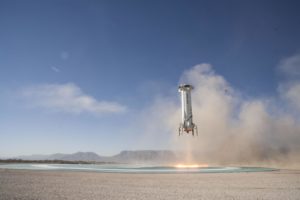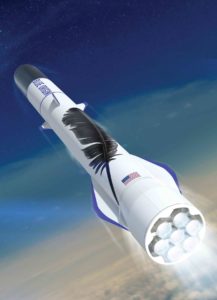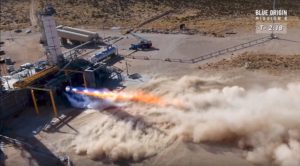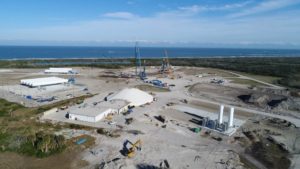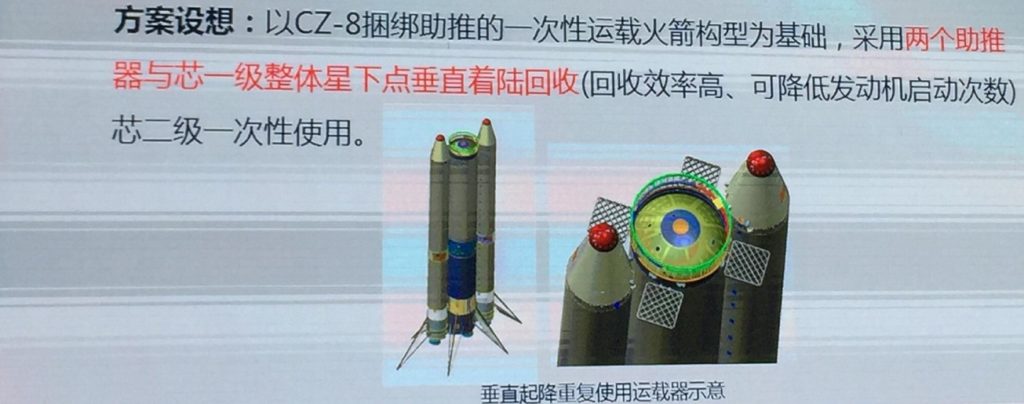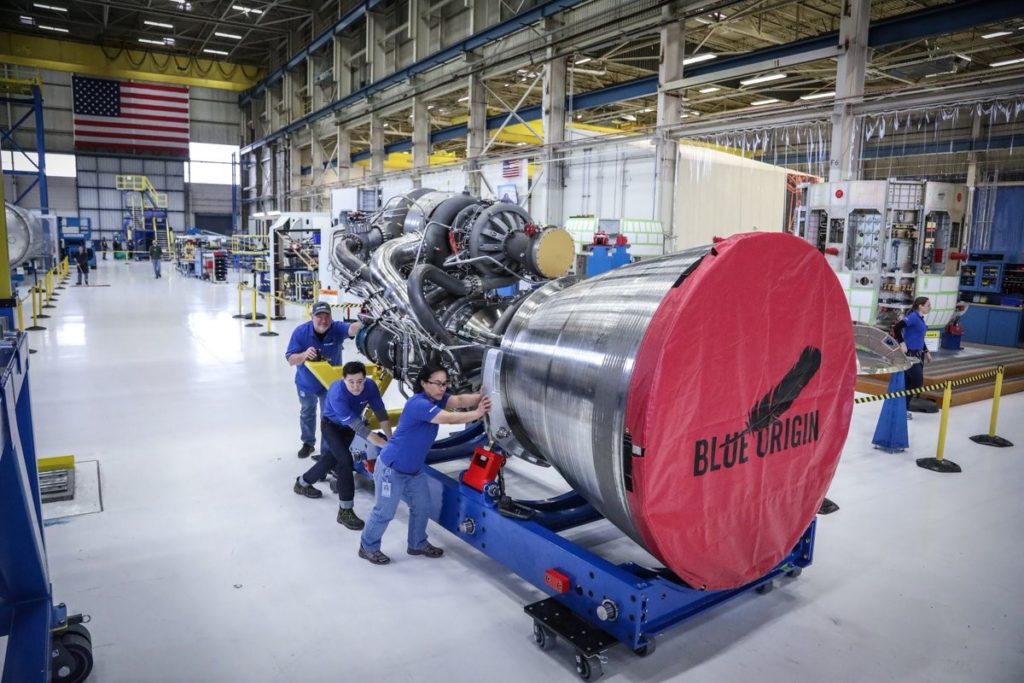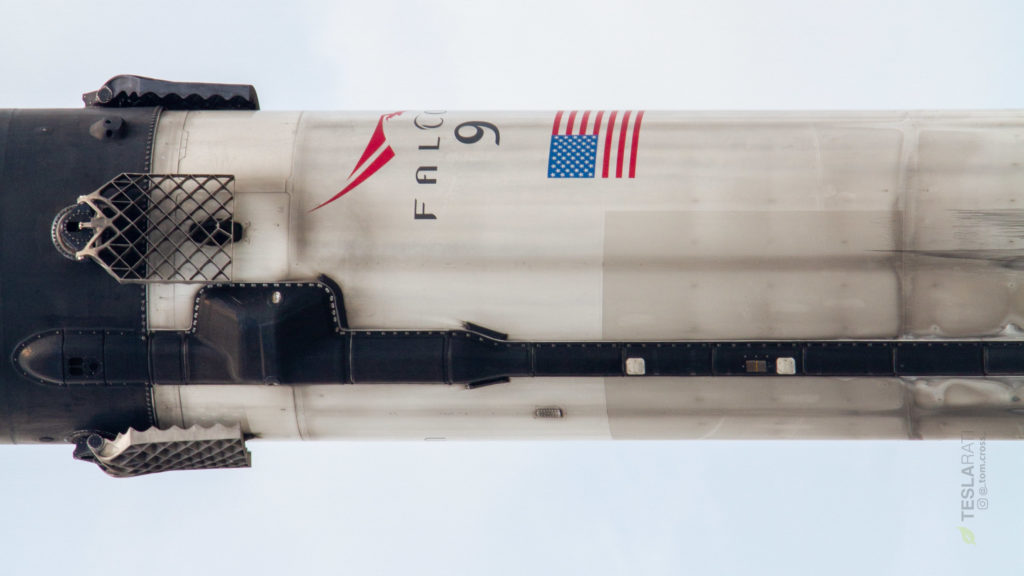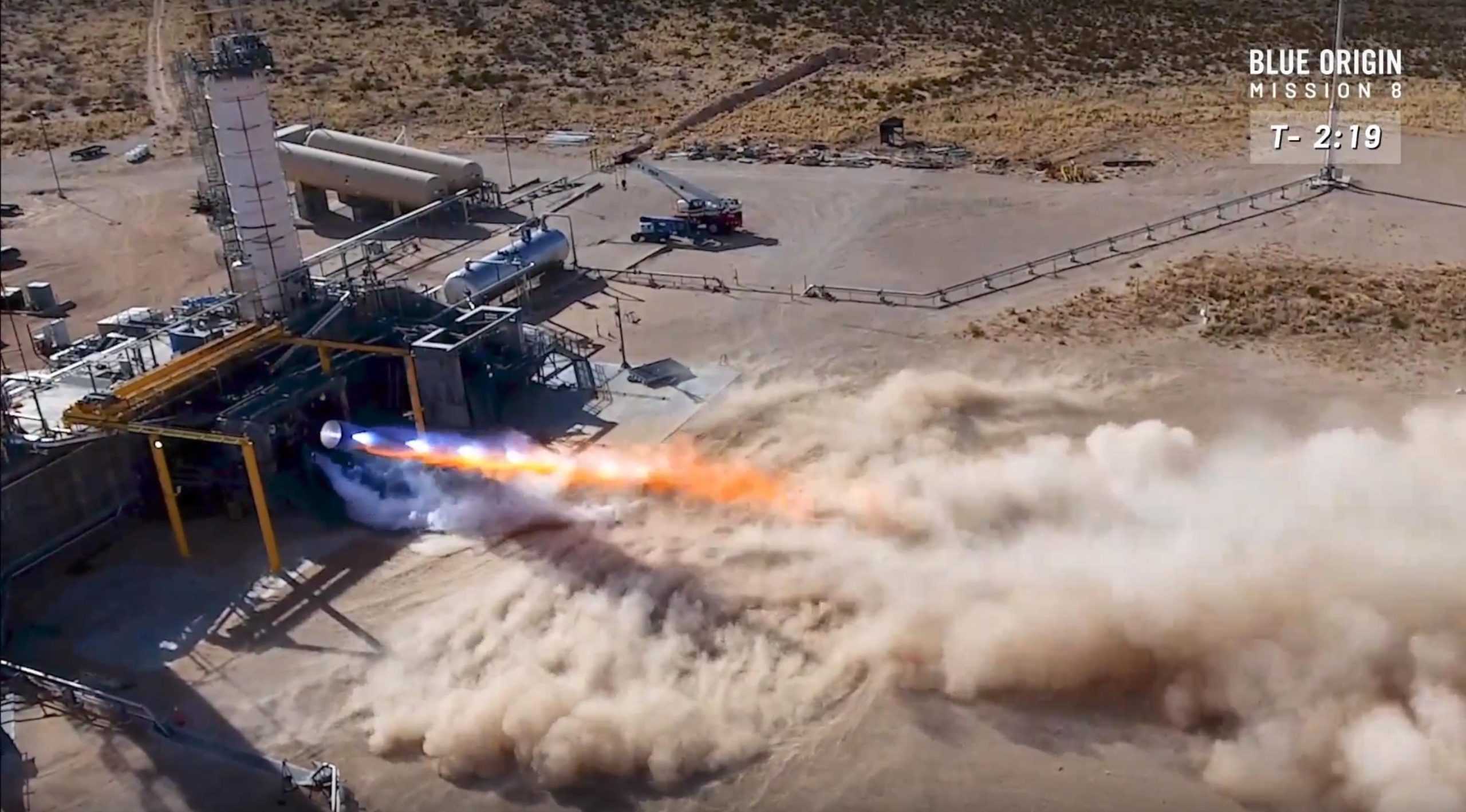
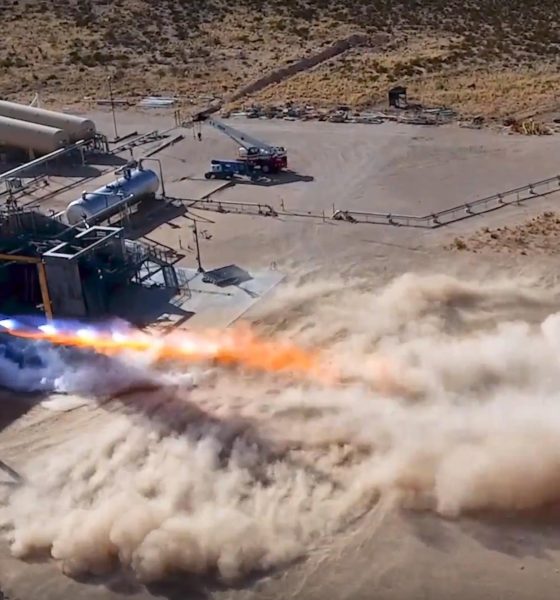
News
SpaceX competitor Blue Origin touts 25-reuse future rocket as R&D continues
A spokesperson for Blue Origin, the reusable rocket company funded by Jeff Bezos and one of the only serious prospective SpaceX competitors, reiterated an oft-used claim that its orbital New Glenn rocket has been designed with reusability in mind “from the start” and stated that the vehicle’s booster is expected to fly 25 times, while its BE-4 engines can expect to see as many as 100 reuses.
Ariane Cornell, Blue Origin’s head of business development and strategy, provided her comments as part of a satellite and rocket hardware panel at the Hong Kong-hosted CASBAA 2018 conference, mainly focused on major participants in the Asian satellite broadcasting industry, for which SpaceX has launched a number of satellites with several more soon to come.
Correction from Ariane: New Glenn first stage can do 25 missions, BE-4 engines designed for 100 flights each.
— Caleb Henry (@ChenrySpace) June 25, 2018
While scarcely anything has changed in the last 12 months, that in itself is hugely noteworthy – SpaceX remains almost completely unchallenged in the space launch industry, at least in terms of investing in R&D for the purpose of dramatically decreasing the cost of orbital launches. While they have yet to dramatically cut the customer-side prices of Falcon 9 and Falcon Heavy launches, it’s all but guaranteed that the sustainable ability to do so is not only already in place but improving day by day. Every flight-proven SpaceX launch completed even before Falcon 9 Block 5’s takeover likely provides as much as tens of millions of dollars for the company to either reinvest or recoup investments in reusability and Falcon Heavy, among other things.
- Blue Origin has had some success with its New Shepard suborbital rocket reuse program, although dramatically different from New Glenn. (NASA)
- Blue Origin’s aspirational future, the highly reusable BE-4 powered New Glenn rocket. (Blue Origin)
- BE-4, an extraordinarily powerful 500k lb thrust methane/oxygen rocket engine, is roughly midway through a ground testing program, likely to reach completion in 2019. (Blue Origin)
- Blue is in the process of constructing an entirely new launch site for New Glenn at Kennedy Space Center, known as LC-36. (Blue Origin)
As of today, Blue Origin is quite simply the only rocket company with demonstrated successes, resources, and commitment to serious operationally-reusable rockets – while Blue has yet to reach orbit, commercial launch stalwarts ULA, Arianespace, and ILS have functionally buried their heads in the sand and either have no plans at all or plan flying even their tepid, disinterested steps into reusable rocket hardware by the mid-2020s at the absolute earliest. SpaceX, on the other hand, has already launched its first purpose-built reusable rocket – Falcon 9 Block 5 – and has two or three more completed boosters either at their launch sites or nearing shipment, with many more being prepared in their Hawthorne, CA factory. In fact, SpaceX’s final non-Block 5 mission is in less than four days (June 29), after which all future launches will be transferred to Block 5 rockets.
All future SpaceX missions will be conducted with highly reusable rocket boosters in the middle of 2018, whereas SpaceX’s current operational competitors are essentially not even trying to field competitive reusable rocket hardware on operational launches before 2024 or 2025. Blue Origin, on the other hand, still appears to be committed to completing the development of its huge, reusable New Glenn rocket, an orbital launch vehicle currently aiming for a debut launch sometime in late 2020. While still late to the start of the SpaceX-fueled reusable launch revolution, commercial launches with reusable hardware beginning as early as 2020-2021 bodes extremely well for Blue’s ability to actually carve out a sturdy segment of the market, while also giving SpaceX at least a decent hint of external motivation to remain competitive.
- China’s reusable rocket goals aim to fly small prototypes as early as 2020, with the ultimate goal of making all Chinese rockets reusable by 2035. (Sina Weibo & Spaceflightfans)
- The scale of BE-4 is demonstrated well in this Kent, WA factory photo. (Blue Origin)
- SpaceX’s first successfully launched and landed Block 5 Falcon 9, May 2018. (Tom Cross)
Aside from Blue Origin and a respectable effort from China, also aiming for initial reusable launch vehicle testing in 2020 (albeit beginning with a conservative – but still orbital – subscale prototype), all other commercial launch competitors are effectively betting their livelihoods on the failures non-traditional launch providers like SpaceX, betting that reusable rockets fail to appreciably lower costs to customers over the better part of the next decade. SpaceX, meanwhile, will begin putting those bets to the test in as few as three weeks.
Follow us for live updates, peeks behind the scenes, and photos from Teslarati’s East and West Coast photographers.
Teslarati – Instagram – Twitter
Tom Cross – Twitter
Pauline Acalin – Twitter
Eric Ralph – Twitter

News
Tesla FSD earns high praise in South Korea’s real-world autonomous driving test
As per the Korea Expressway Corporation’s report, the FSD test was conducted on December 15, 2025, from 10 a.m. to 6 p.m.

Tesla’s Full Self-Driving (FSD) has received a bullish assessment from the Korea Expressway Corporation following a real-world autonomous highway driving test.
A report of the test, shared on Naver Cafe, showed high praise for the system’s safety, capabilities, smooth maneuvers, and confidence.
South Korean highway test
As per the Korea Expressway Corporation’s report, the FSD test was conducted on December 15, 2025, from 10 a.m. to 6 p.m. Four people were in the Tesla that was tested, including the head of the mobility department. All four FSD driving modes were tested, from “Sloth” to “Mad Max.”
To test FSD’s performance, the system was tasked to operate on highways such as Gyeongbu, Cheonan, and Cheonan-Nonsan, as well as city areas in Dongtan New Town, Sejong Special City, and Daejeon Metropolitan City, among others.
Since FSD is only available for the Tesla Model S and Model X that are imported to South Korea from the United States, the system was not tested in a Model 3 or Model Y, which comprise the majority of Teslas on the country’s roads today.
Highway test results
Results showed FSD performing well, both in inner-city roads and on highways. In inner city roads, the testers noted that FSD was capable of autonomous driving at a level that already exceeds that of general human drivers, except in very few areas, such as unprotected left turns and work zone intersections.
In highways, the testers described FSD’s performance as “excellent,” though the system still showed frequent cases of violations in local bus lanes and max speed limit rules. These, however, could hopefully be addressed by Tesla in a future FSD update without many issues. The testers also noted that in some parts of the test, FSD seemed to be driving autonomously in accordance with traffic flow rather than strict traffic rules.
테슬라 Fsd 고속도로 자율주행 테스트 결과 보고 by Simon Alvarez
News
Tesla claims nearly 20% market share as Norway sets new car sales record
Tesla captured roughly one in five new cars in Norway, highlighting its dominance in the world’s most EV-friendly market.
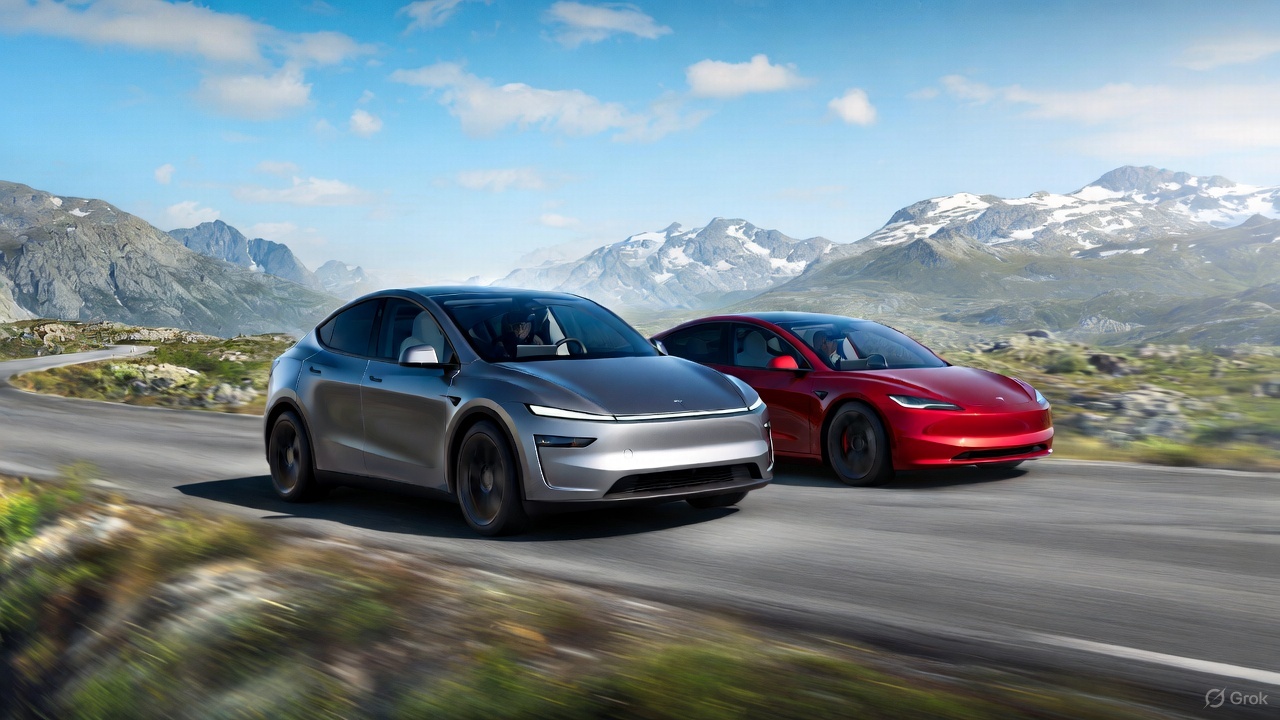
Norway shattered its all-time new car sales record in 2025, and Tesla emerged as the clear winner. A year-end rush ahead of higher EV taxes pushed registrations to nearly 180,000 vehicles, with electric cars accounting for 96% of sales.
Tesla captured roughly one in five new cars in Norway, highlighting its dominance in the world’s most EV-friendly market.
Norway’s EV rush
As noted in a CarUp report, Norway’s electric vehicle sales in 2025 surged, thanks in part to buyers rushing ahead of a post–new year VAT increase of roughly 50,000 kronor on many new electric cars. This ended up pulling demand forward and setting a national record with almost 180,000 registrations in 2025.
The result was unprecedented. From the vehicles that were sold in 2025, 96% of new cars sold were fully electric. And from this number, Tesla and its Model Y made their dominance felt. This was highlighted by Geir Inge Stokke, director of OFV, who noted that Tesla was able to achieve its stellar results despite its small vehicle lineup.
“Taking almost 20% market share during a year with record-high new car sales is remarkable in itself. When a brand also achieves such volumes with so few models, it says a lot about both demand and Tesla’s impact on the Norwegian market,” Stokke stated.
Tesla domination
Tesla led all brands in Norway with 34,285 registrations, which is equal to a 19.1% market share. These results place Tesla well ahead of Volkswagen and Volvo, which held a 13.3% and 7.8% market share in 2025, respectively.
On the model chart, Tesla’s strength was even clearer. The Tesla Model Y topped all vehicles with 27,621 registrations, accounting for 15.4% of the entire market. The Tesla Model 3 also ranked among the top five, accounting for 3.7% of Norway’s entire auto sales in 2025.
Other strong performers included Volkswagen’s ID.4 and ID.7, Toyota’s bZ4X, which commanded 4.9%, 3.9%, and 4.1% of Norway’s total sales in 2025, respectively.
News
Tesla China sees 2nd-best month ever by selling 97,171 vehicles wholesale in December
The results mark Tesla China’s second-highest monthly result on record, trailing only November 2022’s 100,291 units.

Tesla posted a sharp year-end rebound in China last month, with December’s wholesale figures climbing to their second-highest level to date.
The surge capped a late-year recovery for the electric vehicle maker, even as full-year wholesale figures still finished lower year over year. Still, the data highlights how Tesla China’s offerings still resonate with customers in the world’s most competitive electric vehicle market.
Tesla China’s December surge
Tesla China sold 97,171 vehicles wholesale in December, as per data from the China Passenger Car Association (CPCA). The results mark Tesla China’s second-highest monthly result on record, trailing only November 2022’s 100,291 units, based on data compiled by CNEVPost. The details of Tesla China’s December results, such as its domestic sales and exports, are yet to be released.
December’s wholesale results represent a 3.63% increase from the same month last year and a 12.08% jump from November’s 86,700 units. It also marked the second consecutive month of year-over-year growth, signaling renewed momentum in China.
Tesla’s late-year momentum is believed to be partly driven by Tesla pulling deliveries forward to allow buyers to take advantage of more favorable purchase tax policies before the calendar year ended. That strategy helped boost monthly performance even as competition in China’s EV market remained intense.
Tesla China’s FY 2025 volumes
Despite the strong December finish, Tesla China’s wholesale sales declined on an annual basis. The electric vehicle maker’s total wholesale figures for 2025 reached 851,732 units, down 7.08% year over year. This could have been due to a variety of factors, from intense competition in the domestic Chinese market to Giga Shanghai’s changeover to the new Model Y in the early part of the year.
Tesla Gigafactory Shanghai continues to play a central role in its global operations, producing the Model 3 sedan and Model Y crossover for both Chinese customers and export markets. The efficiency of Gigafactory Shanghai has allowed it to become Tesla’s largest factory by volume, as well as the company’s primary vehicle export hub.
